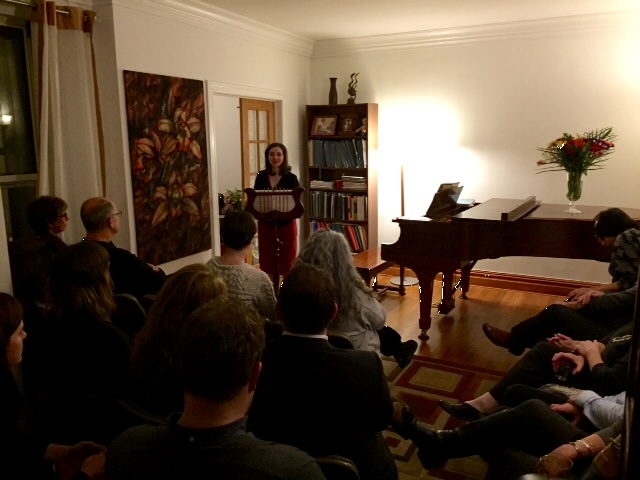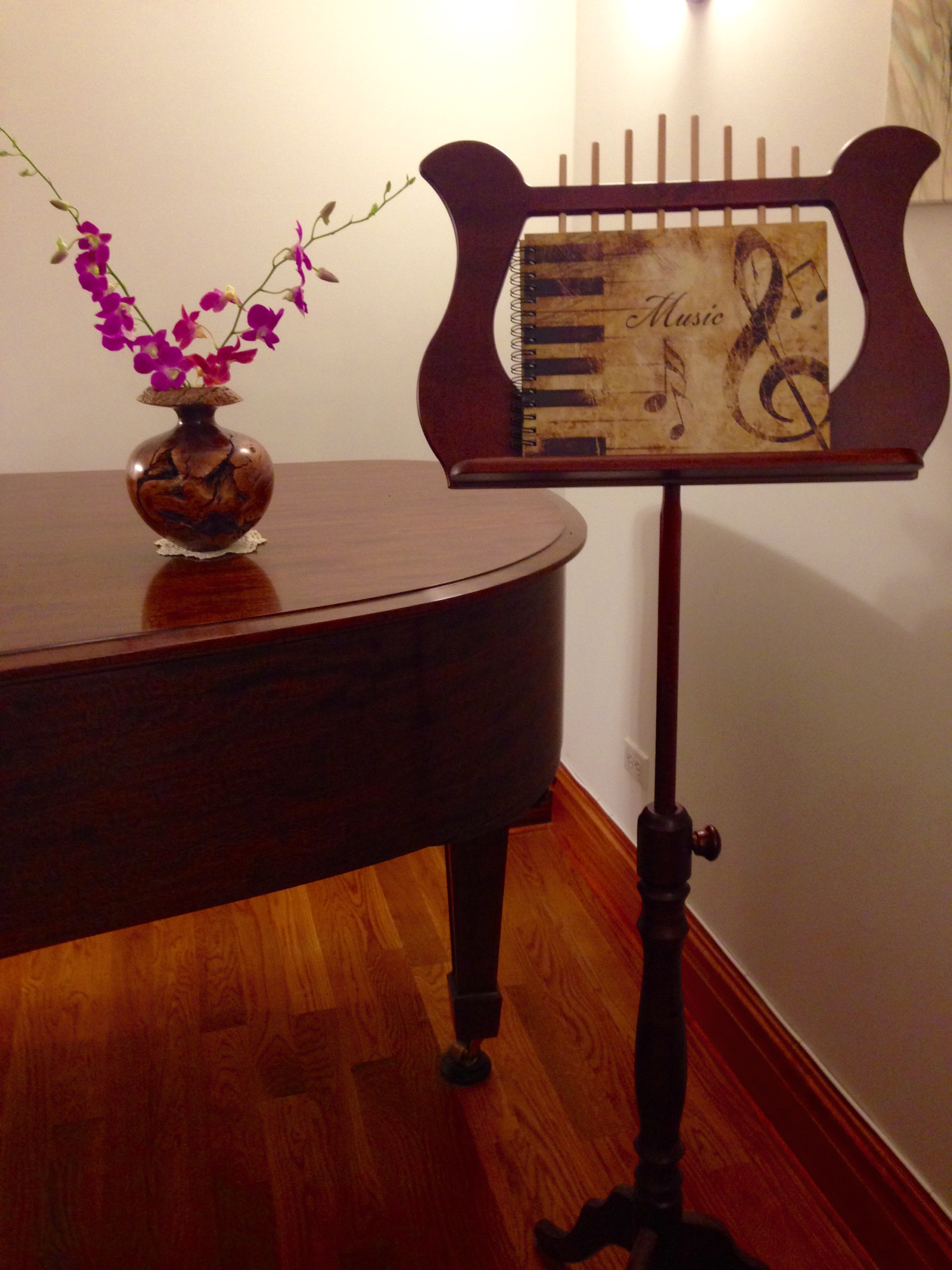Celebrating Alkan at 200
Charles-Valentin Alkan (1813-1888) is perhaps, unjustly, one of the least well-known of the great 19th-century composers, and this afternoon’s program is in celebration of his 200th birthday. It showcases four Romantic masterworks for violin and piano by Mendelssohn, Schubert, Busoni, and Alkan, written when all four composers, coincidentally, were only in their teens and twenties!
Mendelssohn’s Sonata for violin and piano in F Major (1820) exemplifies his remarkable gift as a composer at an astoundingly early age of 11 years old. No wonder Goethe once famously proclaimed Mendelssohn as “the second Mozart.” While still a juvenile work, it already reveals Mendelssohn’s precocious talent and mature grasp of counterpoint that he had studied with Carl Zelter – the director of the Berlin Singakademie who fostered Mendelssohn’s deep interest in the music of J. S. Bach. The Sonata begins with a monothematic first movement, Allegro, cast in a simple sonata form, whose prevalent thematic material is derived from the opening arpeggio figure. The middle movement, Andante, is recast into Minore (F minor), with a two-part theme, first heard in minor and then in major mode, which is then followed by a variation on these two themes and a final return of the opening F-minor theme, which ends the movement on a wistful and slightly elusive note. The Sonata concludes with a delightful scherzo-type Presto, which forecasts Mendelssohn’s signature scherzando– style (playful) movements yet to come.
As in the case of Mendelssohn, Schubert’s Sonata in A Major for violin and piano, (“Grand Duo”), D. 574 (1817) was written when he was just 20 years old. Yet, it already reveals a work of high Classical maturity, harmonic richness and subtlety, melodic lyricism, and buoyant spirit. Reminiscent in style to his three earlier Sonatinas, this Sonata is composed on a much higher level of both technical and expressive content. Cast in four movements, it begins with Allegro moderato, with a congenial piano opening, soon after joined by the violin. The constant hint at A minor lends this opening movement a slight tinge of Schubertian melancholy. The second movement, Scherzo – Presto, is playful and light, with stark dynamic contrasts exchanged between the two players. Its lyrical Trio has a more relaxed and introverted character, featuring the violin’s main melody. The idyllic Andantino that follows is not without a moment of pathos, as in its somewhat agitated middle section. The Sonata ends with an energetic Allegro vivace finale, featuring a graceful and dancelike second theme, concluding with a quasi-Lisztian ff ending in A Major.
Ferruccio Busoni was one of the greatest admirers of Alkan, ranking him with Liszt, Chopin, Schumann, and Brahms as one of the five greatest composers for the piano since Beethoven. Busoni’s charming and quirky Four Bagatelles for violin and piano, op. 28 (1888), written when he was about 22 years old, were composed in Leipzig for the 7-year old Egon Petri, who later became a pianist of great renown. While the title and the genre of Bagatelles suggest a short and insignificant musical piece, Busoni’s Four Bagatelles are hardly trifles for amateur players. They are full of technical complexities and musical nuances, revealing Busoni’s great imagination and the ability to integrate colorful musical styles into his own unique idiom. Aus der Zopfzeit (From the time of the 18th-century Zopfzeit) is a lively opening miniature in whose outer sections the instruments imitate each other closely, before scurrying off into a virtuosic and whimsical-sounding middle section. A parody-type Kleiner Mohrentanz (Little Moorish Dance) features a catchy, folk-like theme for the piano over pizzicato violin chords, and with some spirited exchanges during its course. Wiener Tanzweise (Viennese Dance Tune) is a noble evocation of a 19th-century Waltz in which the violin and piano trade off the charming waltz tune in a graceful and tender manner. The sinister Kosakenritt (Ride of the Cossacks) rounds off the set on a somewhat diabolical note that Busoni perhaps picked up from Alkan’s fascination with the demonic realm.
Alkan’s impassioned Grand duo concertante for violin and piano in F-sharp minor, Op. 21 (1840) was written when Alkan was in his late 20s, and dedicated to the Belgian-born violinist and composer Christien Urhan (1790-1845). It is a monstrously difficult, requiring stupendous virtuosity from the pianist, reflecting perhaps that Alkan has specifically tailored the piano part to show off his own prodigious skills as a pianist! His choice of the F-sharp minor tonality, its parallel F-sharp Major, and the related keys of C-sharp Major, is noteworthy, as these are all sadistic and seldom-used keys. In addition, Alkan continually throws in a number of double-sharps and other strange and rarely encountered accidentals, certainly intended to keep the amateur player away from playing this great demonic work. Of its three movements, the first movement in F-sharp minor, Assez anime, in sonata form, is the shortest. It offers a contrast between the archaic and stark opening and the soaring second theme in D major, repeated three times, the third time with great exaltation (avec exaltation), followed by highly virtuosic and treacherous piano writing for which Alkan was both celebrated and notorious. A very short recapitulation, in the parallel key of F-sharp Major, leads this great opening movement to its jubilant close. While the opening movement is certainly full of demonic and dramatic flair, the heart of the work lies in the slow movement, L’enfer (Hell), which conjures up the darkest, diabolic abyss with the extreme closely spaced dissonances in the lowest range of the piano that convey a sense of terror and despair. This opening, solo piano section begins with a series of tortured and devilish chords rising in a sinister low bass register of the piano. The violin soon enters with a chromatically pleading melody. This exchange is repeated once more and then the violin rhythm becomes transformed into a spiritualized hymn tune stated by the piano, evangeliquement, which then segues into the central sensuous violin melody, muted yet greatly impassioned (avec la plus grande expression) standing in great relief against the murmuring, almost Schubertian, piano accompaniment. This blissful, evangelical passage is short-lived, however, and frighteningly disrupted by the opening dissonances that return in the guise of hellish rolled chords in the piano part. Alkan’s highly imaginative exploration of the lowest register of the piano, along with some adventurous harmonies and ghastly dissonances, is unprecedented, particularly as heard at the end of this chilling middle movement. The virtuosic, toccata-like Finale, sadistically marked as fast as possible, is recast in the jubilant and rarely-used key of F-sharp Major, alternating between bold and brilliant passages of perpetual motion and more understated, fragmented and syncopated, melodies. Throughout its course, the Finale unleashes its demonic drive to set out on a series of tonal excursions through B Major, G minor, A-flat Major and minor, and E Major, before settling in on the unusual and colorful key of C-sharp for the second subject. The learned development section is brief but concentrated, combining the syncopated second subject with a new triplet figure in thorny counterpoint, leading into a tumultuous (ff) triplet passage. A virtuosic piano cadenza leads into the Recapitulation, full of its own surprises and modifications, which builds momentum to a thunderous ff Coda with its explosive chordal exchanges and brilliant passagework, bringing the work to its resounding and thrilling close.
– Program Notes by Dr. Yelena Grinberg





